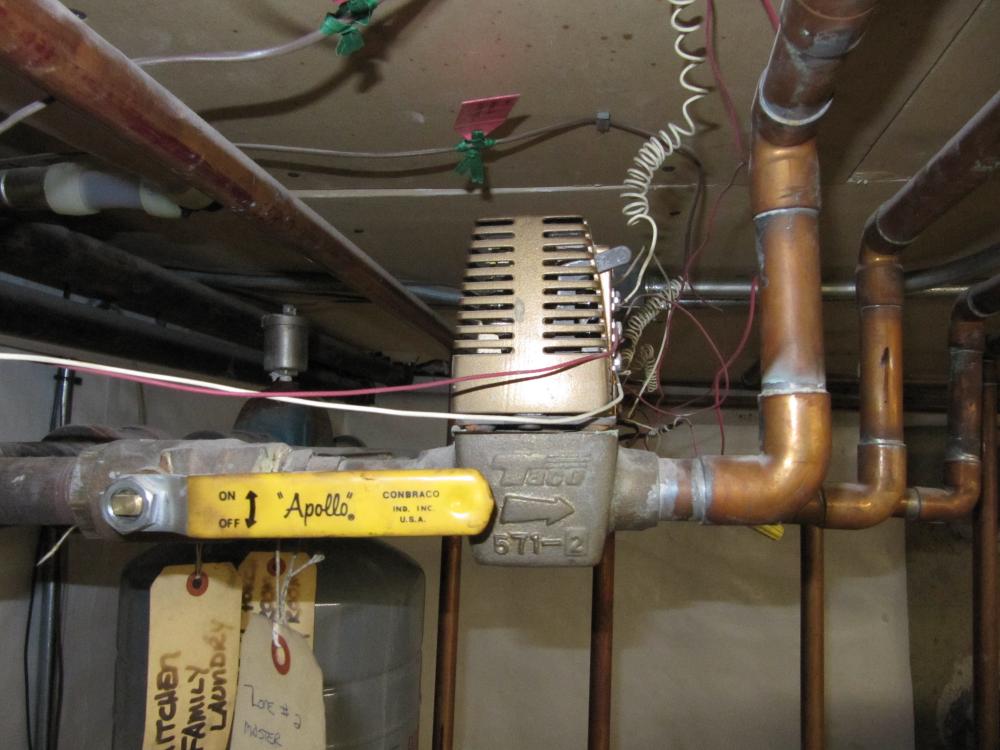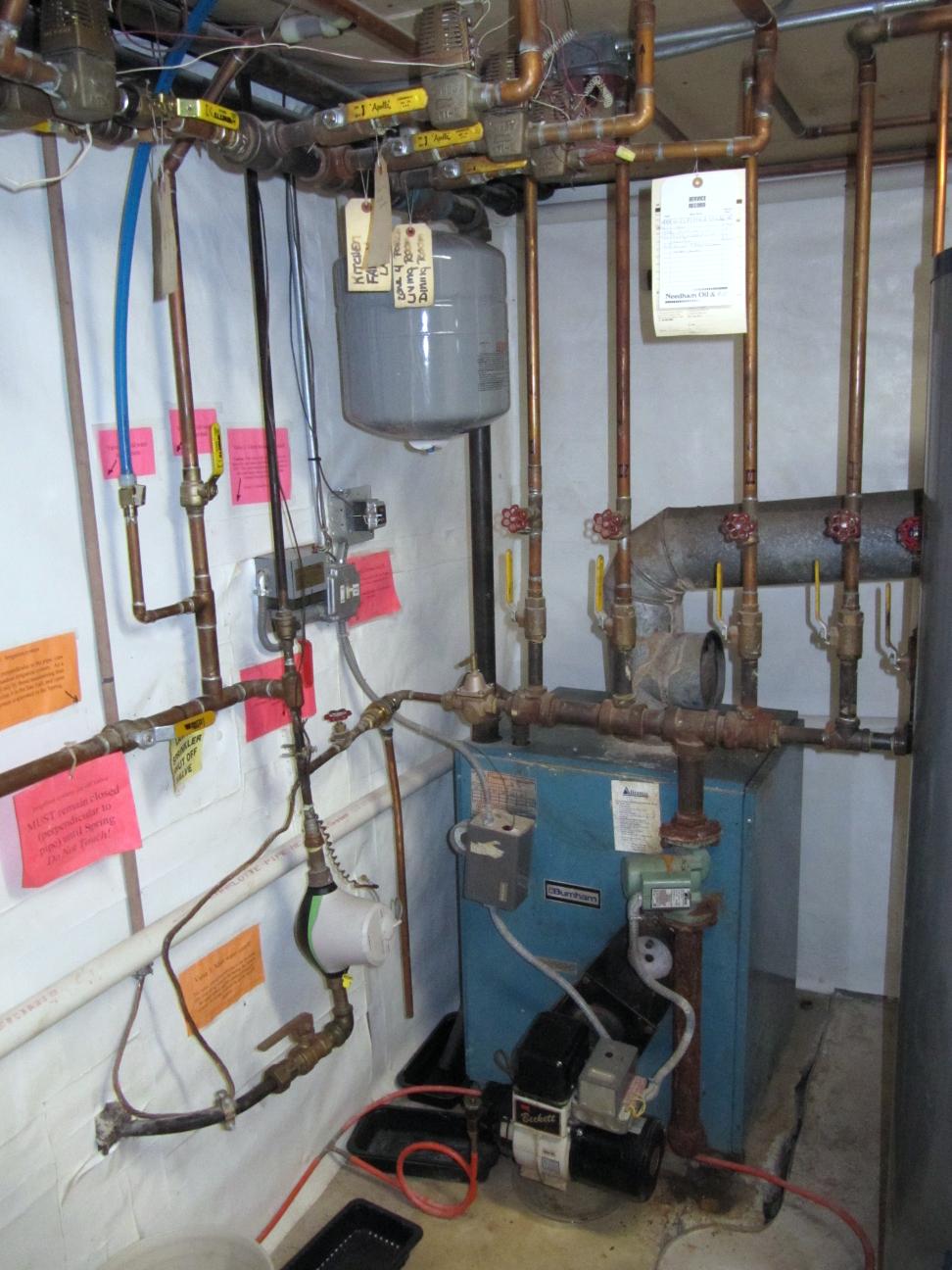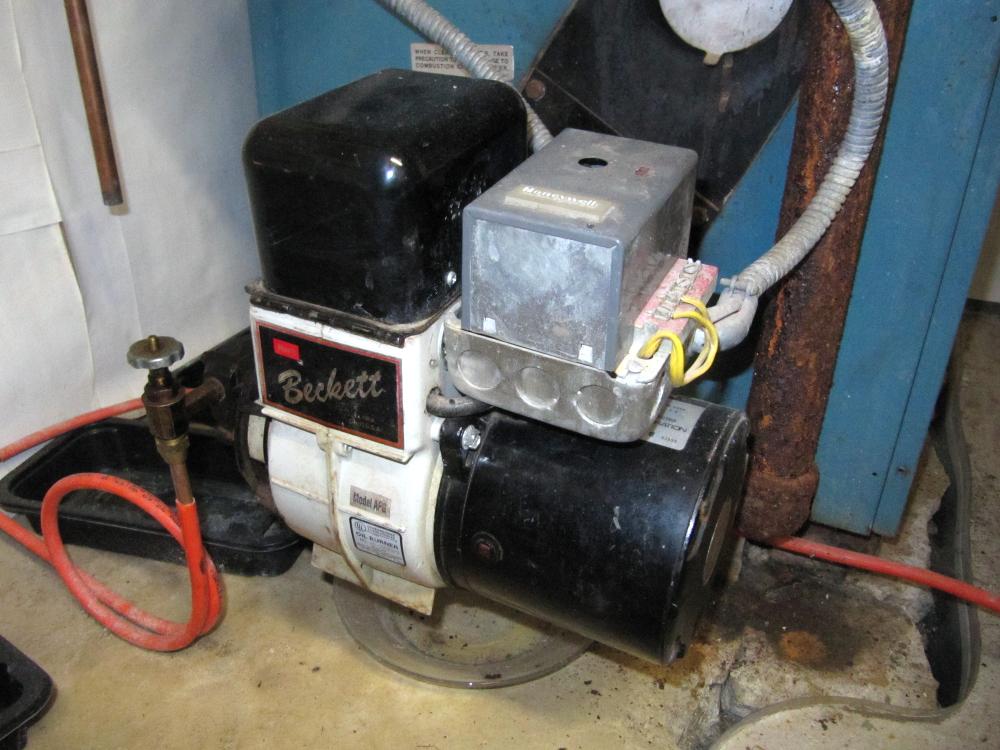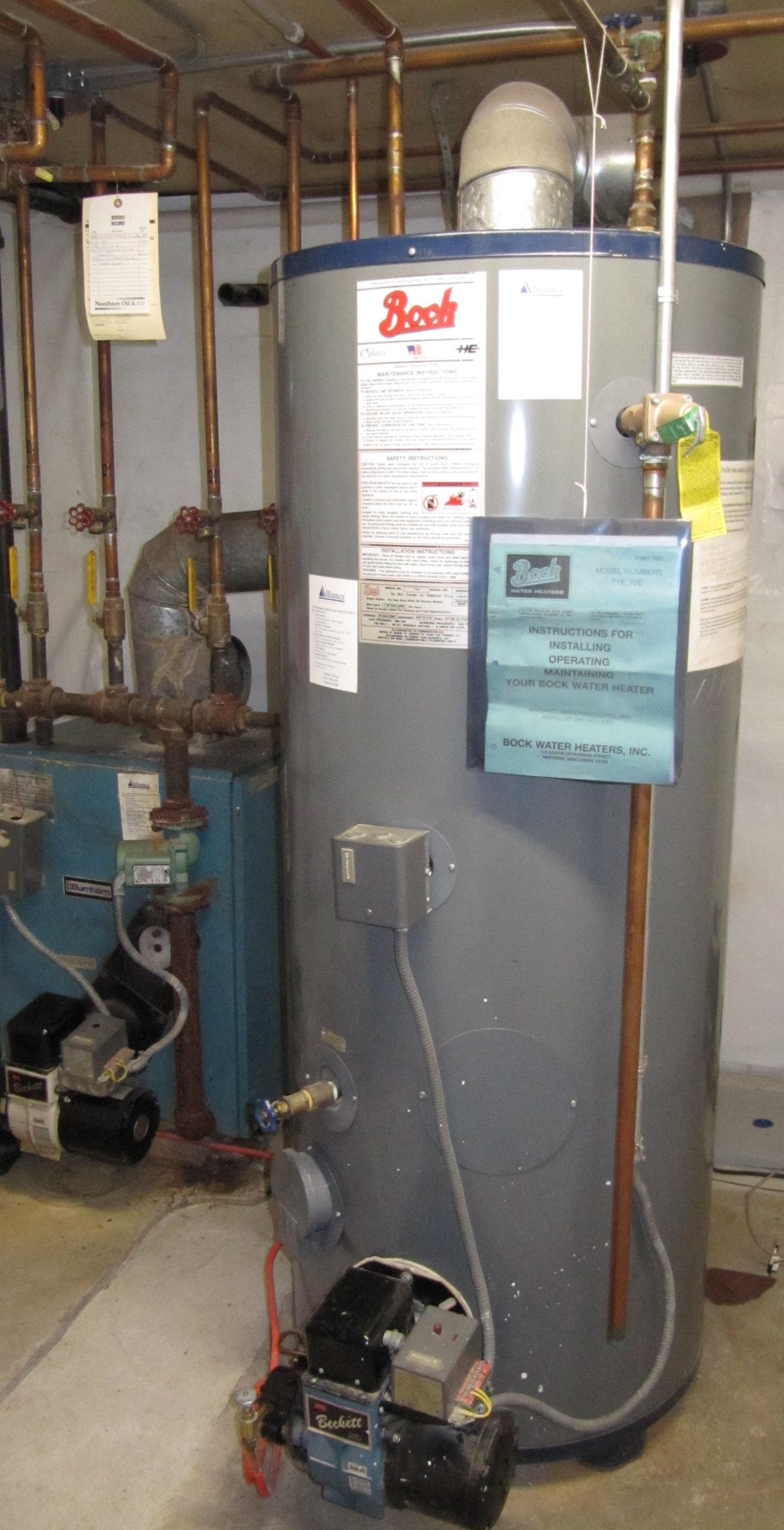 Engineer that I am, I felt a need to document my old oil-burning heating system and hot water heater before they were removed to prepare for our conversion to a system burning natural gas.
Our old furnace and associated piping and wiring are shown to the left. You can click on the picture to enlarge it, and return with the "Back" button. To get an idea of scale: the heavy brown horizontal pipe above the furnace was about a meter off the floor. Hot water from the furnace exited through the dark vertical pipe at its top left, and went up to the "zone valves" (upper-left in the picture, each with an associated yellow cutoff lever), which distributed the water to baseboard radiators in various parts of the house. Water from each zone returned in one of the vertical copper pipes shown above the furnace. These combined in the wide horizontal pipe mentioned above, which fed the green circulating pump that drove the water around. The pictures below show one of the zone valves (on the left), and the circulating pump (with its rusty pipes):   The way it worked: when a room thermostat called for heat by closing a contact, power was sent to the corresponding zone valve. These used a very old and reliable technology - I think the zone valves were the original ones that were present when we moved into the house in 1972. They used some sort of thermal mechanism - they took a while to heat up before opening the valve to allow the flow of water. Once the valve opened, an electrical contact was closed. The contacts from all the zone valves were wired in parallel to a relay which powered the circulating pump. The parallel connection meant that the circulating pump ran if one or more of the zone valves was open (valve open = contact closed). This pumped hot water around all the zones which were calling for heat. As heat was pumped out of the furnace, its temperature dropped. When the furnace temperature got below a certain point with the circulating pump running, the furnace was fired up to maintain its temperature.
A controller managed the startup of the combustion, spraying oil into the combustion chamber and igniting it with an electrical spark. If combustion was not detected with a few seconds, the burner was shut down (otherwise it would have gradually filled the combustion chamber with liquid oil). Note 2
The hot water heater shown was 18 years old, and an identical unit failed catastrophically after only six years, flooding the basement. As I noted in footnote 1 of my earlier entry, the reason the original water heater failed after only six years was because Wayland water at the time was quite acidic. It turns out that water heater tanks contain zinc coated rods, called "anode rods", whose job is to be sacrificed to electrolytic corrosion. This prevents corrosion of the tank. The trouble is, nobody lets you know that the anode rods need to be periodically pulled out for inspection, and replaced if necessary. I was lulled into a false sense of security by the fact that I had my water heater serviced annually. But in fact, the company doing the servicing only deals with the actual oil burner. They clean the nozzle and check its efficiency and otherwise service it, but don't concern themselves with checking the anode rods. When the original hot water tank was inspected after it had burst, the two anode rods were found to have been completely eaten up by the acidic Wayland water. Once they were gone, electrolytic corrosion had attacked the tank. The new system replaces the 75-gallon water heater shown with an 80-gallon tank heated indirectly as a zone of the new gas furnace.
When we closed off the furnace room as part of our basement renovation, we made sure that the door to that room was wide enough to remove the tank. And the door at the top of the basement stairs was barely wide enough - it had about half an inch of clearance, but only after the door itself was taken off its hinges. My next entry, Demo day, shows the removal of all this stuff, done yesterday. Then Gas (ter) shows the replacement heat and hot water system.
  Note 1: I last paid about $3.80 per gallon for gasoline (a U. S. gallon is 3.79 liters). At $1.35 per euro, this is only 0.74 euro/liter, cheap by European standards. [return to text] Note 2: One of the installers of my new furnace mentioned a type of accident that can happen, fortunately very rarely. If maintenance of a furnace is neglected, the bolts holding the oil burner on to the furnace can corrode, and the entire oil burner assembly can drop off. The next time it starts, it will shoot flaming oil into the furnace room, generally setting the house on fire. [return to text]  |



